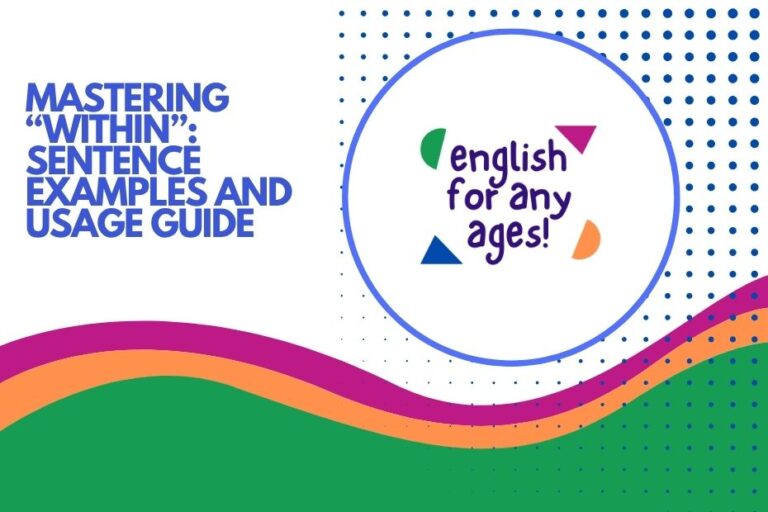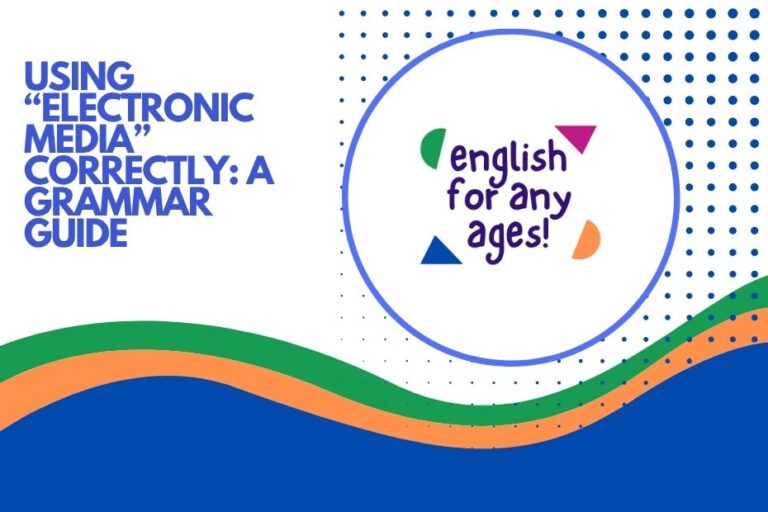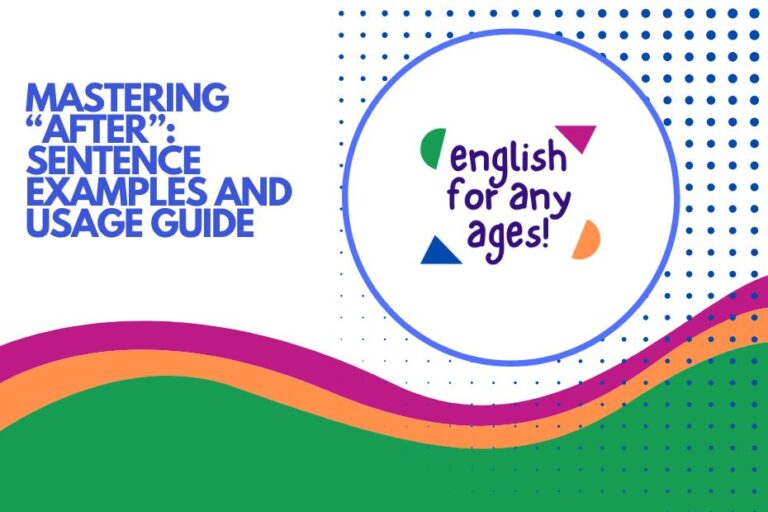How to Use “Balm” in a Sentence: A Comprehensive Guide
Understanding how to use the word “balm” correctly can significantly enhance your writing and speaking skills. “Balm” carries a rich history and nuanced meaning, making its proper usage crucial for effective communication.
This article aims to provide a comprehensive guide on mastering the use of “balm” in various contexts. Whether you’re a student, a writer, or simply someone looking to improve their English vocabulary, this guide will equip you with the knowledge and practice needed to confidently use “balm” in your sentences.
This guide covers everything from the basic definition of “balm” to its various usages, structural breakdown, and common mistakes to avoid. Through detailed explanations, examples, and practice exercises, you’ll gain a solid understanding of how to incorporate “balm” effectively into your everyday language.
Let’s dive in and explore the world of “balm”!
Table of Contents
- 1. Definition of “Balm”
- 2. Structural Breakdown of “Balm”
- 3. Types or Categories of “Balm” Usage
- 4. Examples of “Balm” in Sentences
- 5. Usage Rules for “Balm”
- 6. Common Mistakes When Using “Balm”
- 7. Practice Exercises
- 8. Advanced Topics
- 9. Frequently Asked Questions (FAQ)
- 10. Conclusion
1. Definition of “Balm”
The word “balm” has two primary meanings, both centered around the idea of soothing and healing. Understanding these definitions is crucial for using the word correctly.
Firstly, “balm” refers to a fragrant, oily preparation used to heal or soothe the skin. This is the literal, physical definition. These balms are often made from natural ingredients and are used to treat various skin conditions, such as dryness, irritation, and minor wounds. Think of lip balms, muscle balms, or healing salves; these fall under this definition.
Secondly, “balm” can be used figuratively to describe something that provides comfort, relief, or healing to the spirit or emotions. In this sense, it refers to something that eases pain, anxiety, or distress. This usage extends beyond the physical realm and delves into the emotional and psychological aspects of healing.
In essence, “balm” can be classified as both a noun, referring to the physical substance or the source of comfort, and less commonly, a verb, meaning to soothe or heal. Its function in a sentence is typically to act as the subject, object, or complement, depending on the context. The contexts in which “balm” is used range from medical and cosmetic to emotional and spiritual discussions.
2. Structural Breakdown of “Balm”
Understanding the structural elements of “balm” in a sentence involves recognizing its grammatical role and how it interacts with other words. “Balm” primarily functions as a noun, but it can also be used as a verb, although this is less common.
As a noun, it can act as the subject of a sentence, the object of a verb, or the object of a preposition. As a verb, it means to soothe or heal.
When used as a noun, “balm” often appears with articles (a, an, the) or possessive pronouns (my, your, his, her, its, our, their). It can also be modified by adjectives to provide more specific details about the type or quality of the balm.
For example, “a soothing balm,” “the herbal balm,” or “my favorite balm.”
When used figuratively, “balm” often appears in phrases that describe the source of comfort or relief. These phrases typically involve prepositions such as “to,” “for,” or “in.” For example, “balm to the soul,” “balm for the weary,” or “balm in Gilead.”
Here’s a breakdown of the typical sentence structures involving “balm”:
- Subject: The balm soothed my skin.
- Object of Verb: I applied the balm to my wound.
- Object of Preposition: There is relief in the balm.
- Figurative Subject: His words were a balm to her wounded spirit.
- Figurative Object of Preposition: Music is a balm for my anxiety.
3. Types or Categories of “Balm” Usage
The usage of “balm” can be broadly categorized into two main types: literal and figurative. Understanding these categories will help you use the word more accurately and effectively.
3.1. Literal Usage: The Physical Substance
In its literal sense, “balm” refers to a physical substance used for healing or soothing the skin. This category includes various types of topical preparations, such as lip balms, muscle balms, and healing salves.
These balms are typically made from natural ingredients and are applied directly to the skin to alleviate discomfort or promote healing. When using “balm” in this context, you are referring to a tangible product that can be seen, touched, and applied.
Examples of literal usage include:
- “I applied a balm to my chapped lips.”
- “She used a muscle balm to relieve her sore muscles.”
- “The herbal balm helped heal the minor cut on his hand.”
3.2. Figurative Usage: Soothing or Healing Influence
In its figurative sense, “balm” refers to something that provides comfort, relief, or healing to the spirit or emotions. This usage extends beyond the physical realm and delves into the psychological and emotional aspects of healing.
When using “balm” figuratively, you are referring to an intangible source of comfort or relief, such as kind words, peaceful music, or a supportive friend.
Examples of figurative usage include:
- “His kind words were a balm to her wounded heart.”
- “The peaceful music was a balm to my stressed mind.”
- “Her friendship was a balm during my difficult times.”
4. Examples of “Balm” in Sentences
To further illustrate the usage of “balm,” let’s explore a variety of examples categorized by literal and figurative contexts. These examples will provide a clearer understanding of how to incorporate “balm” into your sentences effectively.
4.1. Literal Examples
The following table provides examples of “balm” used in its literal sense, referring to a physical substance used for healing or soothing the skin.
Here’s a table demonstrating the use of “balm” in its literal sense:
| Sentence | Explanation |
|---|---|
| She applied a thick layer of lip balm to protect her lips from the cold. | “Lip balm” is a specific type of balm used for moisturizing lips. |
| The nurse gently rubbed the healing balm on the burn. | “Healing balm” indicates a balm specifically designed to aid in healing. |
| He used a muscle balm after his intense workout. | “Muscle balm” is used to soothe sore and strained muscles. |
| The herbal balm smelled strongly of lavender and chamomile. | Describes the scent of a balm made from herbs. |
| This balm is effective for treating minor skin irritations. | Indicates the balm’s purpose in treating skin issues. |
| I always carry a small tin of balm in my purse. | Shows the portability and common use of balm. |
| The doctor recommended a medicated balm for the eczema. | Specifies a balm containing medication for treating a skin condition. |
| She massaged the balm into her dry, cracked hands. | Describes the application of balm to dry skin. |
| The balm contained beeswax and essential oils. | Lists ingredients commonly found in balms. |
| He found relief from the itching after applying the balm. | Shows the soothing effect of the balm. |
| The ointment-like balm created a protective barrier on the skin. | Describes the protective quality of the balm. |
| This particular balm is known for its anti-inflammatory properties. | Highlights a specific benefit of the balm. |
| She prefers balms made with organic ingredients. | Indicates a preference for natural balms. |
| The balm helped to reduce the redness and swelling around the wound. | Describes the balm’s effect on inflammation. |
| He checked the label of the balm for any potential allergens. | Emphasizes the importance of checking ingredients. |
| After a day in the sun, the cooling balm was a welcome relief. | Illustrates a situation where balm is particularly helpful. |
| The balm is specially formulated for sensitive skin. | Highlights the suitability of the balm for certain skin types. |
| She bought the balm at the local apothecary. | Indicates where one might purchase balm. |
| The balm came in a small, reusable jar. | Describes the packaging of the balm. |
| Using the balm regularly helped to prevent chapped lips. | Shows the preventive use of balm. |
4.2. Figurative Examples
The following table provides examples of “balm” used in its figurative sense, referring to something that provides comfort, relief, or healing to the spirit or emotions.
Here’s a table demonstrating the use of “balm” in its figurative sense:
| Sentence | Explanation |
|---|---|
| Her kind words were a balm to his wounded spirit. | “Balm” represents comfort and healing for emotional pain. |
| The peaceful music was a balm to her stressed mind. | “Balm” signifies relaxation and relief from mental stress. |
| His presence was a balm during the difficult times. | “Balm” indicates support and comfort provided by someone. |
| The quiet solitude of the forest was a balm to my soul. | “Balm” represents the calming and restorative effect of nature. |
| A good book can be a balm for a weary traveler. | “Balm” signifies the comforting and relaxing effect of reading. |
| Time is often the best balm for grief. | “Balm” represents the healing process over time. |
| Prayer can be a balm to those seeking solace. | “Balm” indicates the comfort and peace found through prayer. |
| Laughter is a balm for the soul. | “Balm” signifies the uplifting and healing power of laughter. |
| The memory of her smile was a balm to his lonely heart. | “Balm” represents the comfort provided by a cherished memory. |
| Forgiveness is a balm that heals both the giver and the receiver. | “Balm” signifies the healing power of forgiveness. |
| The beauty of nature is a balm for the eyes. | “Balm” represents the pleasing and restorative effect of natural beauty. |
| Art can be a balm for the creative spirit. | “Balm” signifies the fulfillment and satisfaction derived from artistic expression. |
| Friendship is a balm that soothes the sting of loneliness. | “Balm” signifies the comforting effect of companionship. |
| The sound of rain was a balm to the parched earth. | While slightly personified, “balm” here alludes to the relief rain gives. |
| His encouraging words acted as a balm, easing her anxieties. | “Balm” signifies the reduction of anxiety through positive affirmation. |
| For many, the rhythm of the ocean is a balm that calms the mind. | “Balm” signifies the tranquility induced by the ocean’s rhythm. |
| Knowing she was loved was a balm that comforted her deepest fears. | “Balm” signifies the security and reassurance derived from love. |
| The teacher’s patience was a balm to the frustrated student. | “Balm” signifies the calming effect of patience on frustration. |
| Kindness is a balm that can heal many wounds. | “Balm” signifies the restorative power of kindness. |
| The artist found that painting was a balm to her troubled mind. | “Balm” signifies the therapeutic effect of artistic creation. |
| After the storm, the silence was a balm to our ears. | “Balm” signifies the welcome relief from noise. |
| A long walk in nature is a balm for anyone feeling overwhelmed. | “Balm” signifies nature’s ability to soothe and de-stress. |
4.3. Balm for Specific Ailments
This table illustrates how “balm” can be used in both literal and figurative senses to address specific ailments, whether physical or emotional.
| Ailment | Literal Usage | Figurative Usage |
|---|---|---|
| Chapped Lips | She applied a moisturizing lip balm to heal her chapped lips. | – |
| Sore Muscles | He rubbed a muscle balm on his aching legs after the marathon. | – |
| Minor Burns | The cooling balm provided instant relief to the sunburn. | – |
| Dry Skin | She used a hydrating balm to nourish her dry skin. | – |
| Anxiety | – | The sound of the ocean waves was a balm to her anxiety. |
| Grief | – | Time and supportive friends were a balm to his grief. |
| Loneliness | – | The warmth of her family’s love was a balm to her loneliness. |
| Stress | – | Meditation became a balm for his stressful life. |
| Wounded Spirit | – | His forgiveness was a balm to her wounded spirit. |
| Fear | – | Her mother’s embrace was a balm to the child’s fear of the dark. |
| Itchy Skin | He applied an anti-itch balm to calm the irritated skin. | – |
| Discouragement | – | The coach’s pep talk was a balm to the team’s discouragement after the loss. |
| Restlessness | – | Reading a familiar book was a balm to her restlessness. |
| Frustration | – | Taking a break from work proved a balm for his frustration. |
| Cracked Heels | She used a special foot balm to heal her cracked heels. | – |
| Emotional Trauma | – | Therapy was a balm to help her process the emotional trauma. |
| Disappointment | – | Acceptance became a balm to his disappointment when he didn’t get the job. |
| Exhaustion | – | A restful night’s sleep was a balm to her physical and mental exhaustion. |
| Numbness | – | Creative expression was a balm to her emotional numbness. |
| Irritation | A soothing balm helped reduce the skin irritation. | – |
5. Usage Rules for “Balm”
To use “balm” correctly, it’s essential to understand the grammatical and contextual rules that govern its usage. These rules will help you avoid common mistakes and ensure that your sentences are clear and accurate.
5.1. Grammatical Rules and Considerations
As a noun, “balm” can be singular or plural, although the plural form “balms” is less common, especially when referring to the figurative sense. When using “balm” as a noun, ensure that it agrees with the verb in the sentence.
For example:
- Singular: The balm soothes my skin.
- Plural: The balms are known for their healing properties.
When using “balm” figuratively, it’s often preceded by articles (a, an, the) or possessive pronouns (my, your, his, her, its, our, their). The choice of article or pronoun depends on the context and the intended meaning.
- “His kind words were a balm to her wounded spirit.”
- “The peaceful music was the balm to my stressed mind.”
While “balm” can technically be used as a verb, meaning “to soothe” or “to heal,” this usage is archaic and rarely encountered in modern English. It’s generally best to avoid using “balm” as a verb unless you are aiming for a deliberately old-fashioned or poetic effect.
5.2. Contextual Appropriateness
The appropriateness of using “balm” depends on the context of your writing or speech. In formal or technical contexts, such as medical or scientific writing, it’s essential to use “balm” in its literal sense, referring to a physical substance with specific healing properties.
Avoid using it figuratively in these contexts, as it may be perceived as unprofessional or imprecise.
In creative writing, such as poetry or fiction, you have more freedom to use “balm” both literally and figuratively. The figurative usage can add depth and emotion to your writing, but it’s essential to ensure that it aligns with the tone and style of your piece.
In everyday conversation, “balm” can be used both literally and figuratively, depending on the situation. However, be mindful of your audience and the overall tone of the conversation.
If you’re unsure whether a figurative usage is appropriate, it’s best to err on the side of caution and use a more straightforward expression.
6. Common Mistakes When Using “Balm”
Several common mistakes can occur when using “balm.” Being aware of these errors can help you avoid them and use the word more accurately.
1. Misusing “Balm” as a Verb: As mentioned earlier, using “balm” as a verb is archaic and rarely appropriate in modern English. Instead of saying “The music balmed my soul,” it’s better to say “The music soothed my soul.”
2. Confusing Literal and Figurative Usage: Ensure that you are using “balm” in the appropriate sense for the context. Using it literally when a figurative meaning is intended, or vice versa, can lead to confusion.
3. Overusing Figurative Language: While figurative language can add depth to your writing, overusing it can make your writing sound contrived or melodramatic. Use “balm” figuratively sparingly and only when it enhances the overall effect.
4. Incorrect Article Usage: Using the wrong article (a, an, the) before “balm” can change the meaning of the sentence. For example, “balm to my soul” is less common and impactful than “a balm to my soul.”
Here’s a table illustrating correct and incorrect usages:
| Incorrect | Correct | Explanation |
|---|---|---|
| The music balmed my soul. | The music soothed my soul. | Avoid using “balm” as a verb in modern English. |
| I applied balm to my heart. | I found balm for my heart. | “Applied” is typically used for physical substances, not emotions. |
| She needed balm after a long day. | She needed a balm after a long day. | The article “a” clarifies the figurative usage. |
| His words were balm. | His words were a balm. | The article “a” makes the figurative meaning clearer. |
7. Practice Exercises
To solidify your understanding of how to use “balm,” complete the following practice exercises. These exercises will test your knowledge of the literal and figurative usages of “balm,” as well as your ability to use it correctly in different contexts.
Exercise 1: Fill in the Blanks
Fill in the blanks with the appropriate form of “balm” (balm or balms).
- She applied a soothing ______ to her sunburn.
- His kind words were a ______ to her wounded spirit.
- These ______ are known for their healing properties.
- The music was a ______ to my stressed mind.
- I always carry a lip ______ in my purse.
Exercise 2: Identify the Usage
Identify whether “balm” is used literally or figuratively in each sentence.
- The herbal balm helped heal the cut on his hand.
- Her friendship was a balm during my difficult times.
- He used a muscle balm to relieve his sore muscles.
- The peaceful solitude of the forest was a balm to my soul.
- She applied a thick layer of lip balm to protect her lips from the cold.
Exercise 3: Sentence Construction
Write a sentence using “balm” in each of the following contexts:
- Literal usage: Describing a balm used for a specific skin condition.
- Figurative usage: Describing something that provides comfort or relief.
Exercise 4: Error Correction
Correct the following sentences that contain errors in the usage of “balm.”
- The music balmed my soul.
- I applied balm to my heart.
- She needed balm after a long day.
- His words were balm.
Exercise 5: Multiple Choice
Choose the best sentence that correctly uses “balm”:
- Which sentence correctly uses “balm” in a literal sense?
- a) His words were a balm to her soul.
- b) She applied the lip balm to her chapped lips.
- c) The silence was balm after the noisy day.
- Which sentence correctly uses “balm” in a figurative sense?
- a) He rubbed the balm on his sore muscles.
- b) The herbal balm smelled of lavender.
- c) Her laughter was a balm to my loneliness.
- Which sentence uses “balm” most effectively?
- a) Balm is good.
- b) He used balm.
- c) The kindness of strangers was a balm during her travels.
Exercise 6: Short Answer
- Explain the difference between the literal and figurative uses of “balm.”
- Describe a situation where you might use the phrase “a balm to my soul.”
- Give an example of a physical ailment for which someone might use a balm.
Exercise 7: True or False
- “Balm” can be used as a verb in modern English. (True/False)
- Using “balm” figuratively always makes your writing stronger. (True/False)
- Lip balm is an example of the literal use of “balm.” (True/False)
- “Balm” can only refer to physical substances. (True/False)
Exercise 8: Sentence Completion
Complete the following sentences in a meaningful way using the word “balm”:
- After a stressful day at work, I found that ______ was a balm to my nerves.
- To soothe my dry skin, I applied a ______ made with natural ingredients.
- The sound of rain on the roof can be a ______ to those who feel restless.
- She discovered that helping others was a ______ to her own sorrows.
Exercise 9: Paraphrasing
Rewrite the following sentences, replacing the word “balm” with a synonym that maintains the original meaning:
- Her words were a balm to his wounded spirit.
- The herbal balm helped heal the cut on his hand.
- Music can be a balm to a troubled mind.
Exercise 10: Creative Writing
Write a short paragraph (5-7 sentences) that uses the word “balm” at least twice, once literally and once figuratively. Your paragraph should create a vivid image or convey a strong emotion.
Answers to Exercises:
Exercise 1:
- balm
- balm
- balms
- balm
- balm
Exercise 2:
- Literal
- Figurative
- Literal
- Figurative
- Literal
Exercise 3:
- Literal: She used a medicated balm to treat her eczema.
- Figurative: The support of her family was a balm during her illness.
Exercise 4:
- The music soothed my soul.
- I found balm for my heart.
- She needed a balm after a long day.
- His words were a balm.
Exercise 5:
- b) She applied the lip balm to her chapped lips.
- c) Her laughter was a balm to my loneliness.
- c) The kindness of strangers was a balm during her travels.
Exercise 6:
- The literal use of “balm” refers to a physical substance used for healing or soothing, while the figurative use refers to something that provides emotional comfort or relief.
- I might use the phrase “a balm to my soul” to describe the feeling of peace and contentment I experience while spending time in nature.
- Someone might use a balm for dry skin, chapped lips, or minor burns.
Exercise 7:
- False
- False
- True
- False
Exercise 8:
- After a stressful day at work, I found that listening to classical music was a balm to my nerves.
- To soothe my dry skin, I applied a balm made with natural ingredients.
- The sound of rain on the roof can be a balm to those who feel restless.
- She discovered that helping others was a balm to her own sorrows.
Exercise 9:
- Her words were a comfort to his wounded spirit.
- The herbal salve helped heal the cut on his hand.
- Music can be a soother to a troubled mind.
Exercise 10:
The desert air was harsh, and my skin cracked easily. Each night, I would apply a thick, fragrant balm to my hands, the scent of lavender and sandalwood filling the tent.
But it wasn’t just the physical discomfort that plagued me; the vast, empty landscape mirrored the emptiness in my heart. Yet, the quiet beauty of the stars, the shared stories around the campfire – these were a balm to my loneliness, a reminder that even in the most desolate places, connection and healing could be found.
8. Advanced Topics
For advanced learners, understanding the nuances of “balm” in literature and idiomatic expressions can further enhance their comprehension and usage of the word.
8.1. “Balm” in Literature and Poetry
“Balm” has been used in literature and poetry for centuries, often to evoke a sense of comfort, healing, or tranquility. It appears in various works, ranging from classical literature to modern poetry.
Analyzing these examples can provide a deeper understanding of the word’s connotations and its impact on the reader.
For example, in the Bible, the “balm of Gilead” is mentioned as a symbol of healing and restoration. This reference has been widely used in literature and music to represent hope and comfort in times of distress.
Studying how renowned authors and poets have incorporated “balm” into their works can inspire you to use the word more creatively and effectively in your own writing.
8.2. Idiomatic Expressions with “Balm”
While there aren’t many common idiomatic expressions that directly use the word “balm,” the concept of providing comfort or relief is often conveyed through other idioms. Understanding these related idioms can help you appreciate the broader context in which “balm” is used figuratively.
For example, the phrase “a soothing influence” is similar to the figurative meaning of “balm.” Similarly, idioms like “to ease someone’s pain” or “to lighten someone’s burden” convey the idea of providing comfort or relief, which is closely related to the concept of “balm.”
Exploring these related idioms can enrich your vocabulary and enhance your ability to express nuanced meanings related to comfort and healing.
9. Frequently Asked Questions (FAQ)
Here are some frequently asked questions about using “balm” in a sentence:
- Can “balm” be used as a verb in modern English?
While technically possible, using “balm” as a verb is archaic and rarely appropriate in contemporary English. It’s generally better to use synonyms like “soothe” or “heal.”
- What is the difference between “balm” and “ointment”?
“Balm” is typically a fragrant, oily preparation, often made from natural ingredients, used to soothe or heal the skin. “Ointment” is a broader term for a greasy preparation used for medicinal purposes. While some balms can be considered ointments, not all ointments are balms.
- Is it correct to say “balms” instead of “balm”?
Yes, “balms” is the plural form of “balm.” However, it’s less common, especially when






